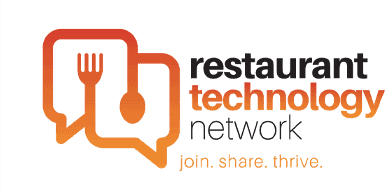Dining as we knew it hasn’t been the same since the COVID-19 pandemic began. Community tables, food truck rallies, packed food halls – these, at least for the past year, have been a thing of the past.
But will that continue? What’s changed that consumers now believe is for the better when it comes to the dining experience? What dining trends can we look forward to in a post-COVID world? And how might some consumer behaviors make for even better dining scenarios in the future?
Research already suggests that customers have some new priorities post-COVID. For instance, Restaurant Business Online reports that “40% of those surveyed said they plan to focus more on saving and budgeting their money after the coronavirus threat passes.”
Restaurants have had to change with these adjustments. We can expect restaurant footprints to shrink, says Morgan Stanley, which will bring a dramatic shift to dining as we know it. And with a greater number of people now working (and therefore eating) from home, post-COVID might see fewer diners as people have become accustomed to preparing their own food.
Eager to know what’s ahead? In this guide, we’ll look at five future trends for on-premise dining in the post-COVID age.
Simpler Menus With a Zero-Waste Focus
The pandemic made everyone a little more conscious about the planet and our role in it. Consumers want restaurants to be climate-conscious, and to that end, they’re likely to demand a zero-waste focus.
This factor works in many restaurants’ favor, especially those that have had to scale back staff and streamline menus to suit their skinnier operations.
Contactless Payment
Great news for all of you contactless payment fans, the touchless service is here to stay. As of November 2020, CNBC found that 51 percent of Americans are “now using some form of contactless payment, which includes tap-to-pay credit cards and mobile wallets like Apple Pay, according to Mastercard Contactless Consumer Polling.”
No longer a novelty, this technology is now expected by consumers and those numbers mentioned above will likely grow. That’s one reason late adopters should consider joining the contactless age quickly.
Thankfully, there’s an easy way to do so with OneDine, a contactless payment solution that doesn’t require an app. Easy to set up and navigate, both diners and restaurant staffers will find it efficient and straightforward to use.
Dine-In Mobile Ordering
Want to cut costs? Labor is always the most expensive line item for most restaurants, so slim that down with dine-in mobile ordering. Using a QR code on the table, diners can send their orders directly to the kitchen without a server middleman.
Again, this simple solution comes courtesy of OneDine. A streamlined way to make ordering more efficient, customers appreciate how the service saves them time and allows them to take orders into their own hands. And the more they’ve familiarized themselves with ordering from their mobile device, the more we can expect to see consumer demand drive its growth post-COVID.
Ghost Kitchens
Badr Fayez, chef, and owner of Bowlila in Los Angeles forecasts a rise in ghost kitchens, according to Food & Wine. A ghost kitchen is a stand-alone kitchen for virtual brands or delivery-only concepts.
How will that come into play with on-premise dining? A dine-in operation may change to a ghost kitchen or rent out some of its space to a virtual brand to minimize overhead costs.
Roaming Hunger says that the boom in ghost kitchens is due to the growing food delivery trend. “And because most restaurants lose money when they use delivery apps, ghost kitchens appear to be an attempt to fix the problem,” says the site. Either way, it’s an exciting concept that will be fascinating to follow post-COVID.
An At-Home Experience Option
If restaurants learned anything this year, it’s how a crisis can exacerbate the need to offer a variety of services. Simply offering dine-in was a struggle for many, so some restaurants turned to curbside delivery, take-out, and entirely new outdoor experiences.
That’s probably not going to change in 2021 or 2022, even with a vaccine for the virus. People enjoy options (even on a scaled-down menu), which is why some are predicting a rise in brick-and-mortar restaurants offering at-home experiences.
Be it a boxed meal to go or a virtual dining event, expanding and getting creative with how customers experience the dining journey will continue to evolve. If there was ever a great example of this, it’s Seattle’s Canlis restaurant. With the start of the pandemic, the restaurant almost overnight upended its formal dining service to take-out and then prepared boxed meals for pick up. The feedback was extraordinary, and it would be hard to imagine Canlis returning entirely to its traditional dining without keeping some of its boxed meal options customers have grown to love during the pandemic.
What’s next for on-premise dining? Only time will tell.





